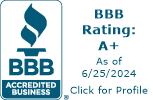Aunt Martha's Peeping Tom
I’m a bit of a practical joker. The things Christie and I did in nursing school—I don’t remember if I’ve ever told my children. This story has nothing to do with the jokes in nursing school but everything to do with Aunt Martha.
A Vivacious Couple
Aunt Martha and Uncle Harold lived in a nice suburban neighborhood outside Atlanta. They were about 80 at the time of this incident. They were not spring chickens, but they were still a vivacious couple thoroughly enjoying life. Aunt Martha had a morning ritual: wake up, shower, and go to the sunroom for breakfast, all while Uncle Harold slept in. She cherished her quiet mornings. But this morning would prove to be different.
An Unusual Morning
As was her habit, after her shower, she liked to walk around and eat breakfast in the buff—naked (nekkid in the South). After finishing her breakfast this morning, she started to go back into the house. Alas! The door was locked. She knocked and knocked, but Harold didn’t wake up.
What was she to do? She could wait, or go to the bedroom window. Out of the sunroom, she stealthily made her way across the backyard and to the bedroom window. She knocked and knocked, but Harold didn’t come to the window.
Now, what to do? She was getting cold. She wanted clothes. She walked between the bushes and the house to the front door. Rang the doorbell and took cover behind the bushes again. Thank goodness Harold answered the door! She was saved. But not without guffaws from Harold!
The Aftermath
So that’s the story. But there’s a bit more. The following week, I was in the car with Aunt Martha and her nieces, though she was their age. She had been born late in her mother’s life and grew up playing with these nieces. She told the story of being nekkid at the front door. We all howled.
Later that week, I decided to write a little note to Aunt Martha.
“Dear Martha,
What a show. I mean, WHAT A SHOW! Thanks for making my day.
Yours truly,
Your very own Peeping Tom”
So that’s the end of the story. Aunt Martha’s Peeping Tom and me.
Fencing Solutions
Though her backyard was fenced, her front yard wasn’t. And would it have made any difference when she was standing naked at the front door?
Take a peep at our fencing solutions. And if you want to eat your breakfast naked in the sunroom, make sure the door is unlocked.
P.S. Yesterday’s story about the generator. Of course, we all know the generator had to be outside, behind Dave’s tent! But I failed to mention it. No carbon monoxide deaths wanted!
All my best regards in gratitude,
Debbie Page
CEO, Louis E. Page Inc – Woman-owned business and Family-owned since 1893. (That’s right! A little more than 131 years ago our family ancestor Louis Everett Page founded the company in Boston)










